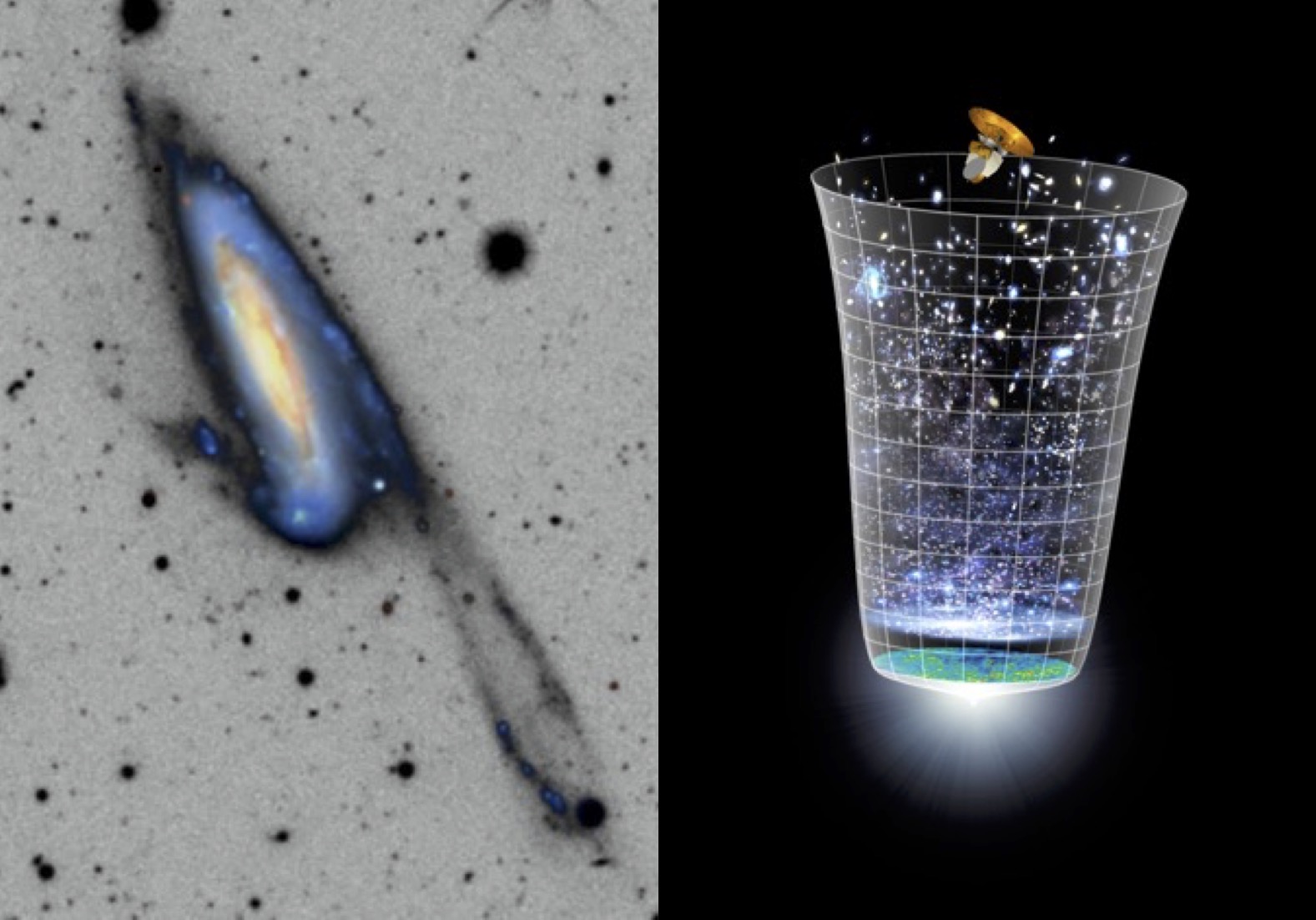
My team and I target pulsating stars and other stellar standard candles to enable highly accurate measurements of the local expansion rate of the Universe, H0, as well as to learn about the physics of these stars.
High Energy Physics Laboratory (SCI-SB-FB)
Frédéric Blanc’s activity is devoted to developing, improving and analysing data from the Large Hadron Collider beauty (LHCb), one of the four main LHC experiments at CERN. He also applies his expertise to other projects in areas such as medical physics.
Laboratory for Theoretical Fundamental Physics (LTFP)
We utilize the methods of Quantum Field Theory, broadly defined, to solve fundamental problems in particle physics, cosmology, and quantum gravity. Particular topics of current interst include: perturbative and non-perturbative dynamics in de Sitter spacetime, application of holography to cosmology, toy models of quantum gravity, confinement in gauge theories, as well as properties of strongly-coupled RG flows with an eye on potential applications to the hierarchy problem.
Laboratory for Galaxy Evolution and Spectral Modelling (GALSPEC)
Michaela Hirschmann’s research interests evolve around astrophysics, focusing on modelling the evolution of galaxies and their central supermassive black holes (BHs) within a cold dark matter cosmogony, and on establishing a close connection between theoretical predictions and observed galaxy spectra.
Pascale Jablonka’s research focuses on understanding how galaxies form and evolve. She aims at characterizing the properties of the first stars and galaxies and the coeval evolution of the latter with the large scale structures of the universe. To this end, she exploits multi-wavelength observations obtained on ground-based and space telescopes as well as high performance computing facilities.
Laboratory of Astrophysics (LASTRO)
My goal is to assemble a focused research group in a unique environment at the crossroad of astrophysics, cosmology and fundamental physics, to shade new “Light on the DArk” (LIDA) using new analysis techniques and new observations coming from on one side: wide field imaging and spectroscopy galaxy surveys, and on the other side: deep multi-wavelength survey of massive galaxy clusters.
High Energy Physics Laboratory (LPHE-RM)
Fields and Strings Laboratory (FSL)
The research of João Penedones and his group is based on Quantum Field Theory and String Theory. The first goal is to develop better non-perturbative methods to study quantum field theories. In this context, the conformal bootstrap approach is a central tool in the research activities of the FSL. The second goal is to explore the gauge/gravity duality to investigate questions about quantum gravity.
Theoretical Particle Physics Laboratory (LPTP)
Grand Unification Theory, electroweak symmetry breaking and the origin of the observed mass hierarchies, dark matter in cosmology, theory of the early universe, particle physics.
Particle Accelerator Physics Laboratory (LPAP)
Particle Accelerator Physics Laboratory (LPAP) research projects are carried out at major accelerator facilities. At the Paul Scherrer Institute (PSI) the laboratory is engaged in development of novel bright synchrotron light source.
High Energy Physics Laboratory (LPHE-OS)
The major long-term involvement of LPHE-OS is with a large international collaboration conducting a particle physics experiment at CERN’s Large Hadron Collider, called LHCb. We have designed, constructed and operated silicon strip detectors and scintillating fibre (SciFi) detectors, and continue R&D on the SciFi technology for future upgrades, experiments and applications. Our main areas of expertise is heavy flavour physics, i.e. the physics of hadrons containing a “bottom” or “charm” quark, and CP violation, i.e. the non-invariance under the symmetry between matter and antimatter. The main purpose of our research is to test the Standard Model of particle physics, a theory describing so far all phenomena observed in particle physics experiments, and to look for “New Physics” beyond the Standard Model in the decay of known particles. We got involved in a wide range of physics analyses, covering production cross-sections, hadronic spectroscopy (conventional or exotic), lifetimes and branching fractions, matter-antimatter mixing parameters, weak couplings, CP-violating phases, and lepton-flavour violation.
High Energy Physics Laboratory (LPHE-LS)
The research conducted in the LPHE-LS is focused on testing the boundaries of the Standard Model of particle physics and on looking for new phenomena which might explain unanswered puzzles in the fundamental description of the Universe. The examples of such puzzles would be dark matter nature, matter-antimatter asymmetry of the Universe or very small but non-zero neutrino masses. The main instrument for these tasks is the LHCb detector at CERN, where the analyses of the collected data in the LHC proton-proton collisions are ongoing. At the same time, the R&D activities for future facilities and experiments which exploit complementary strategies are taking place. In particular, LPHE-LS contributes to the R&D for the fixed target program with the SHiP or TauFV detectors proposed to be built at the future CERN beam-dump facility at the SPS.
The interdisciplinary LASTRO/SCITAS radioastronomy group bridges high-performance computing, data science, astrophysics, and fundamental research in the context of the Square Kilometer Array (SKA) project.